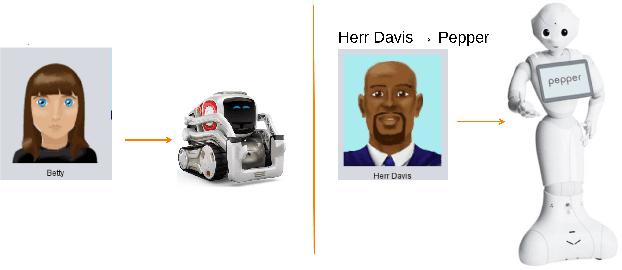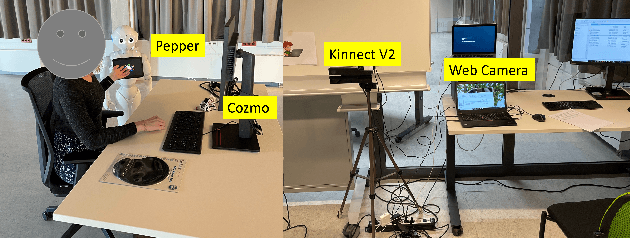Rebecca Lazarides
Nonverbal Immediacy Analysis in Education: A Multimodal Computational Model
Jul 24, 2024Abstract:This paper introduces a novel computational approach for analyzing nonverbal social behavior in educational settings. Integrating multimodal behavioral cues, including facial expressions, gesture intensity, and spatial dynamics, the model assesses the nonverbal immediacy (NVI) of teachers from RGB classroom videos. A dataset of 400 30-second video segments from German classrooms was constructed for model training and validation. The gesture intensity regressor achieved a correlation of 0.84, the perceived distance regressor 0.55, and the NVI model 0.44 with median human ratings. The model demonstrates the potential to provide a valuable support in nonverbal behavior assessment, approximating the accuracy of individual human raters. Validated against both questionnaire data and trained observer ratings, our models show moderate to strong correlations with relevant educational outcomes, indicating their efficacy in reflecting effective teaching behaviors. This research advances the objective assessment of nonverbal communication behaviors, opening new pathways for educational research.
Challenges in Designing Teacher Robots with Motivation Based Gestures
Feb 08, 2023

Abstract:Humanoid robots are increasingly being integrated into learning contexts to assist teaching and learning. However, challenges remain how to design and incorporate such robots in an educational context. As an important part of teaching includes monitoring the motivational and emotional state of the learner and adapting the interaction style and learning content accordingly, in this paper, we discuss the role of gestures displayed by a humanoid robot (i.e., Pepper robot) in a learning and teaching context and present our ongoing research on designing and developing a teacher robot.
 Add to Chrome
Add to Chrome Add to Firefox
Add to Firefox Add to Edge
Add to Edge